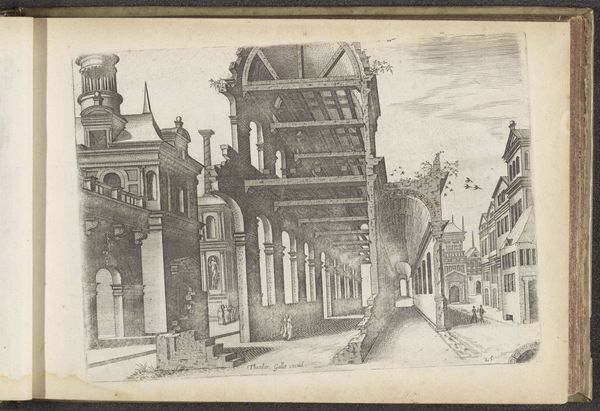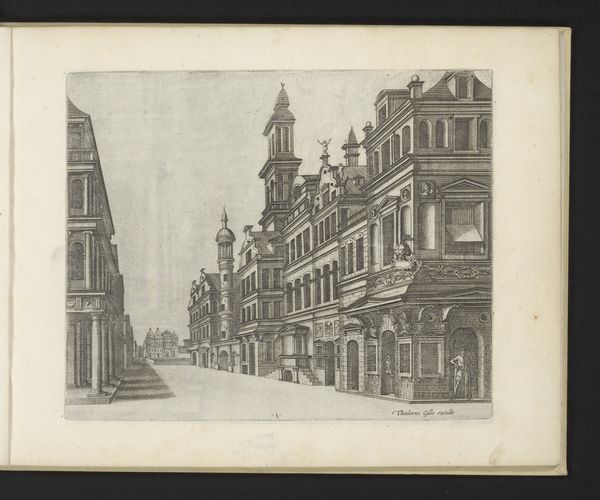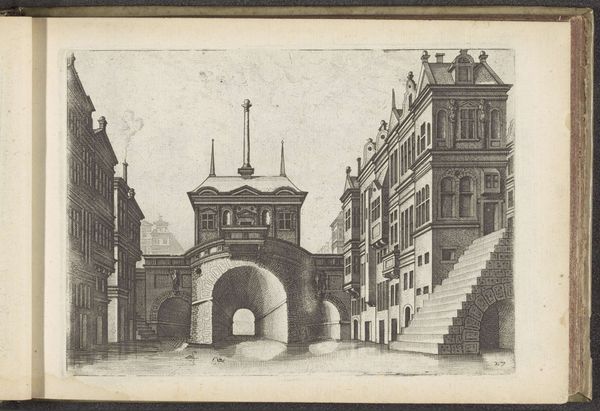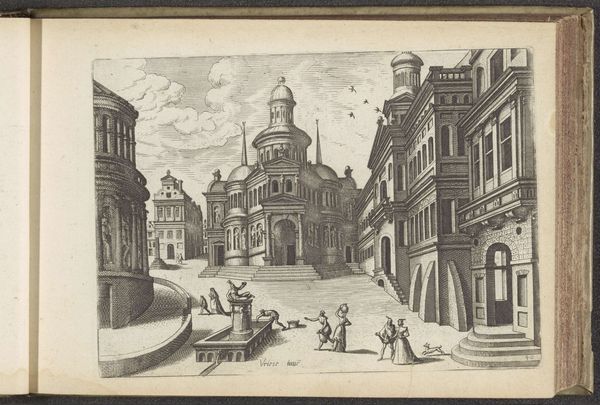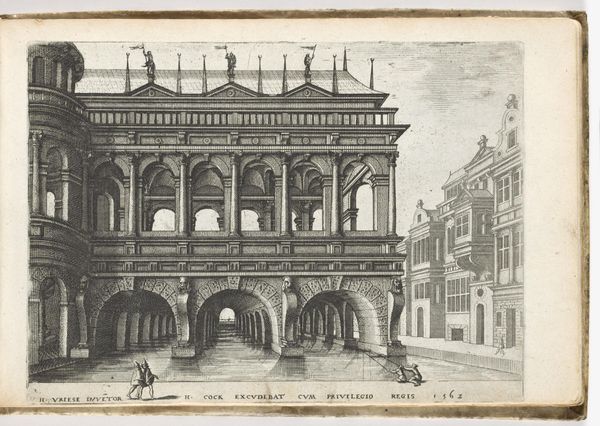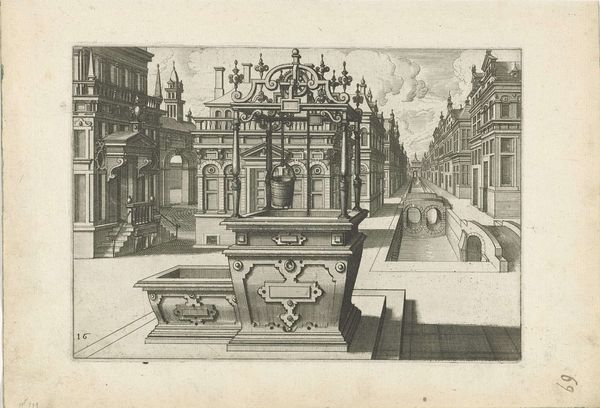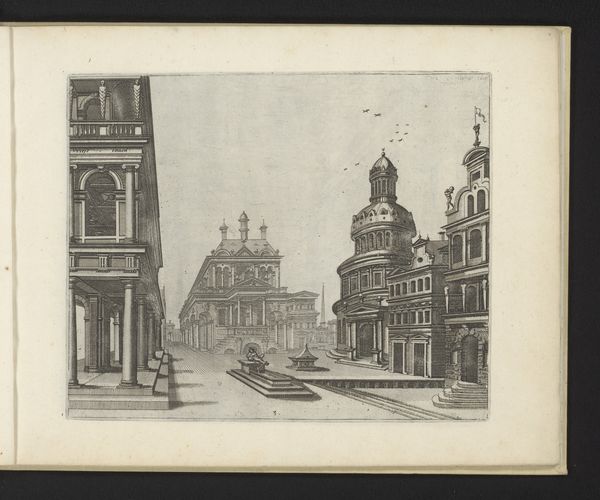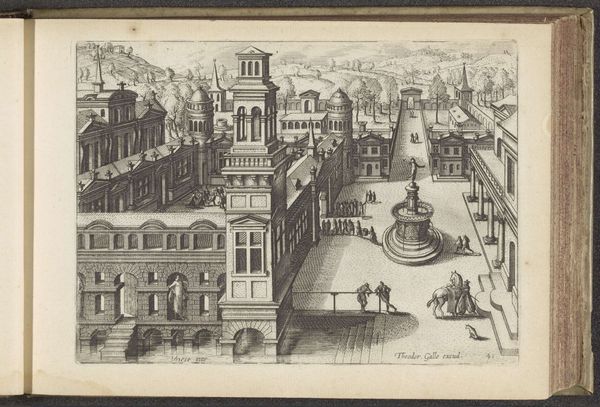
Gezicht in een straat met links op de voorgrond een paleis 1562 - 1601
0:00
0:00
johannesoflucasvandoetechum
Rijksmuseum
drawing, print, engraving, architecture
#
drawing
#
aged paper
#
toned paper
#
dutch-golden-age
# print
#
pen sketch
#
sketch book
#
mannerism
#
personal sketchbook
#
pen-ink sketch
#
pen and pencil
#
line
#
pen work
#
sketchbook drawing
#
cityscape
#
sketchbook art
#
street
#
engraving
#
architecture
Dimensions: height 152 mm, width 209 mm
Copyright: Rijks Museum: Open Domain
Curator: Looking at this print, “Gezicht in een straat met links op de voorgrond een paleis,” from somewhere between 1562 and 1601, purportedly created by Johannes or Lucas van Doetechum, the thing that jumps out at me is this feeling of stillness, almost suspended in time. The light is diffuse, everything's rendered with this incredible, painstaking detail, yet it's somehow devoid of human energy. Editor: Absolutely. The piece evokes a very particular era, doesn’t it? It feels like an urban tableau conceived during a moment of significant transformation—the architecture embodies emerging ideas about power and civic identity. It’s staged almost like a theatrical setting. Curator: Right? It’s like waiting for the actors to appear. I'm captivated by the two figures in the center. They seem rather small amidst the grandeur of these imposing buildings, almost like ants in a monumental maze. It tickles my fancy, makes me want to be inside the etching—and lost—all at once. Editor: Indeed. They highlight the social dimensions. Here, these architectural statements, drawn with such precise lines and angles, are never merely backdrops; they reflect power structures, societal aspirations, and even the complex negotiations of space between those who commission these buildings and those who simply inhabit them. Look at the facades! Curator: Oh, I agree entirely. Each detail has purpose. The columns, the arches—they all serve to create this sense of depth, pulling us into this strange urban landscape that is so utterly familiar, and so utterly alien. Editor: I think that this intersection of the familiar and the strange really invites questions about how power manifests in public spaces, and who has access to shape that narrative. How did the growth of cities impact social interactions? Whose stories get embedded into the urban fabric? It seems that this street represents something between social engineering and personal lived experience. Curator: It does. These urban structures dictate existence. And I think for me, ultimately, what’s so enduring about this piece is how, through the ages, we keep returning to that dynamic in so many ways—this constant push and pull. Editor: Precisely! And it makes you think about whose perspectives are considered worth archiving. Art reminds us of the voices and spaces of a complex social past.
Comments
No comments
Be the first to comment and join the conversation on the ultimate creative platform.

